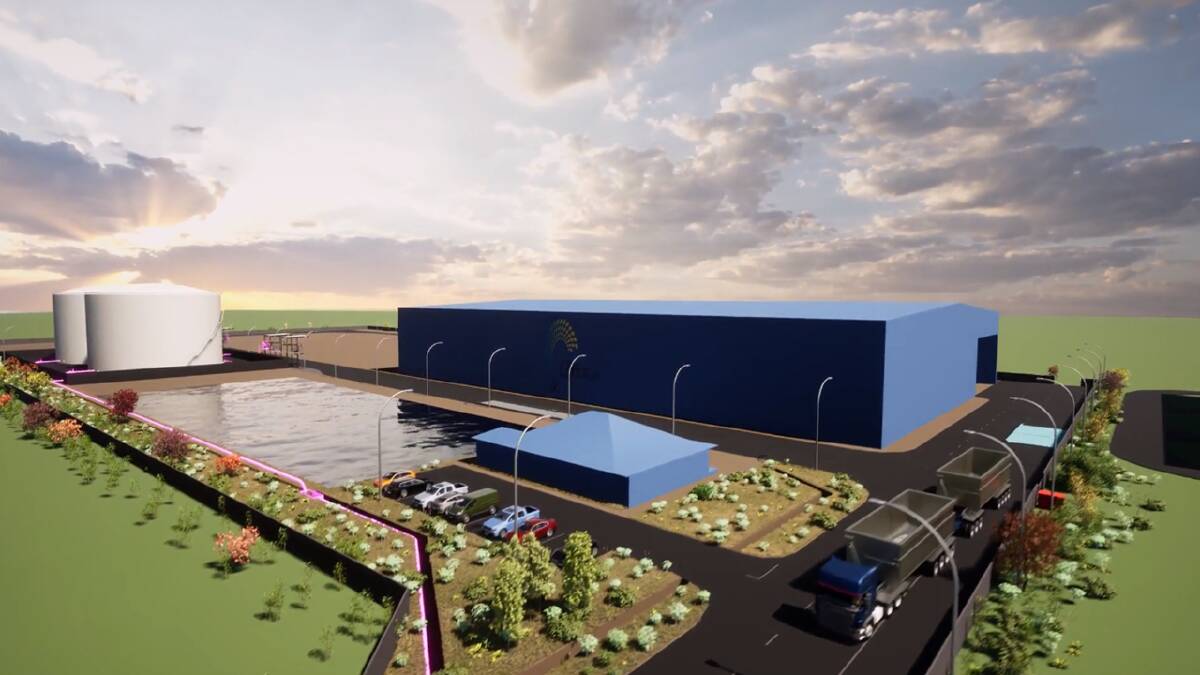AFTER entering the fertiliser game in 2015, CBH Group has taken its biggest step so far after officially breaking ground on its own storage facility, next to the Kwinana Grain Terminal, last week.
The 70,000 square metre development, which is being completed by Kerman Contracting and estimated to cost $55 million, is set to include the construction of about 55,000 tonnes of granular fertiliser storage in a new warehouse and 32,000t of liquid fertiliser or Urea Ammonium Nitrate (UAN) storage in two 16,000t tanks.
On top of that, a UAN ship unloading and transfer pipeline, which will run along the existing Kwinana Grain Terminal jetty, will also be constructed.
The construction of the UAN tanks marks CBH’s first foray into liquid fertiliser, providing the co-operative with the opportunity to get involved in a market of over 500,000t which it has not previously acted in.
Since entering the granular industry, CBH’s fertiliser business has grown approximately 30 per cent year-on-year and last year achieved a 47pc increase in sales.
The success of the venture, which was started as part of the co-operative’s commitment to reduce on-farm input costs for WA graingrowers, has proved the difference CBH has made in the market in terms of competition.
CBH head of fertiliser David Pritchard said having outgrown the facilities that they lease from Qube, and with that mode of operation becoming a little bit expensive, they decided the time was right to put capital into their own facility.
“We’ve seen demand for fertiliser, particularly UAN, grow exponentially in recent years, with the existing market struggling to keep pace during key times,” Mr Pritchard said.
“This new facility will enable us to bring surety of supply to growers and the efficiencies gained through leveraging CBH’s supply chain will be passed along to growers, bringing further competitiveness to the market.”
Part of that efficiency piece includes bringing in UAN across their own jetty and pumping it directly into their own tanks, effectively short circuiting part of the standard supply chain and the costs associated with that, the savings of which would be passed directly onto growers.
At $55m, there is no denying that the facility is a large investment and CBH chairman Simon Stead said there was a fair chance that price would increase.
“We’re seeing with all our projects that the contractors are building in capacity for price escalation due to COVID factors and one of the big ones is the ability to increase project costs if steel prices go up,” Mr Stead said.
“We’ve so far seen several of those increases before we’ve even put a shovel into the ground.”
However, the co-operative asserted that it had been around for 85 years and wasn’t going anywhere, so overtime the investment would be well paid off.

An artists impression of the new fertiliser storage facility which is being built next to CBH’s Kwinana Grain Terminal.
Unsurprisingly, it has been a challenging three of four months for the CBH fertiliser business, and the fertiliser industry as a whole, with skyrocketing prices and availability of supply both wreaking havoc on the market.
CBH had a shipment of granular fertiliser arrive about Christmas and has three more shipments due to arrive early February, late February and early March.
While it has taken a bit of work, the co-operative is comfortable that it has everything it needs on the water to cover what has already been contracted to growers for seeding.
However, fertiliser challenges for the year do not end there and ongoing global conditions are set to continue to play a part.
“Back in September, China decided to impose an export ban on pretty much all of its fertiliser which put a rocket under the market and it’s grown three fold since then in pricing terms,” Mr Pritchard said.
“We’re also facing COVID related issues on ocean freight which has tripled for bulk transit and impacted prices by US$100, plus globally commodity prices are high, as are the raw materials that go into making fertiliser.
“There has been a perfect storm of three of four things that have contributed to prices pushing through unprecedented levels from the last 15 years.”
For 2022, pricing has been to to remain pretty firm across seeding products and potash.
On the nitrogen side, it has started to ease a little, however it will take China coming back into the market as an exporter to send prices back to where they were in the middle of 2021 and even with that, they may never get there.
Regardless, it’s going to be an expensive input year for growers, whether that be chemicals or fertiliser, which while not liked, is something that they’re predominantly now accepting of.
In terms of the facility itself, clearing of the site started this week and the construction phase will likely begin in March.
The physical warehouse will go up quicker and in theory should be finished about August or September, with the tanks to take a bit longer and hopefully be ready by Christmas or early next year.
The plan is that the facility would be operational by March 2023, however given the current environment, that could change.
Want weekly news highlights delivered to your inbox? Sign up to the Farm Weekly newsletter.








